I’ve tried dozens of clean face oils over the years, and I’m sharing the best ones for gua sha facial massage. Plus, I’ve got traditional Chinese medicine doctor and gua sha practitioner Dr. Ervina Wu, who is also founder of TCM brand YINA, sharing her top gua sha face oil recommendations.
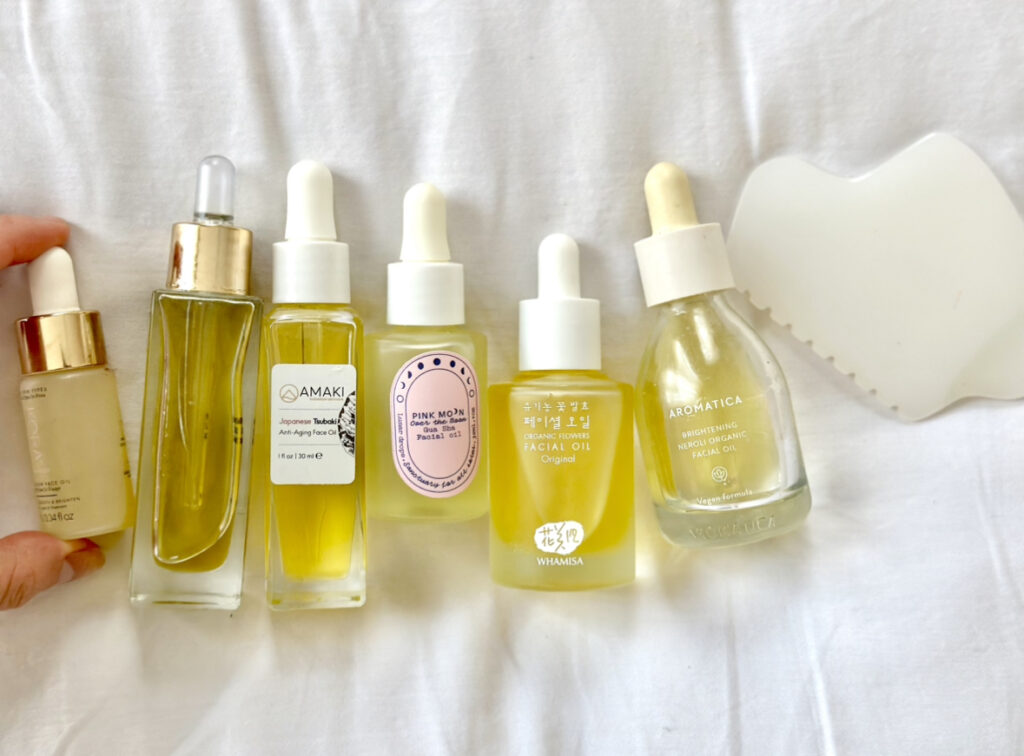
Face oils are a necessary part of any gua sha face massage practice. “It’s important to create slip when practicing gua sha through an oil or balm. You want your gua sha stone to be able to glide smoothly without tugging or pulling the skin, especially for facial gua sha,” Dr. Wu tells us. The best facial oils will be slippery for the gua sha tool to slide smoothly across without stretching the skin.
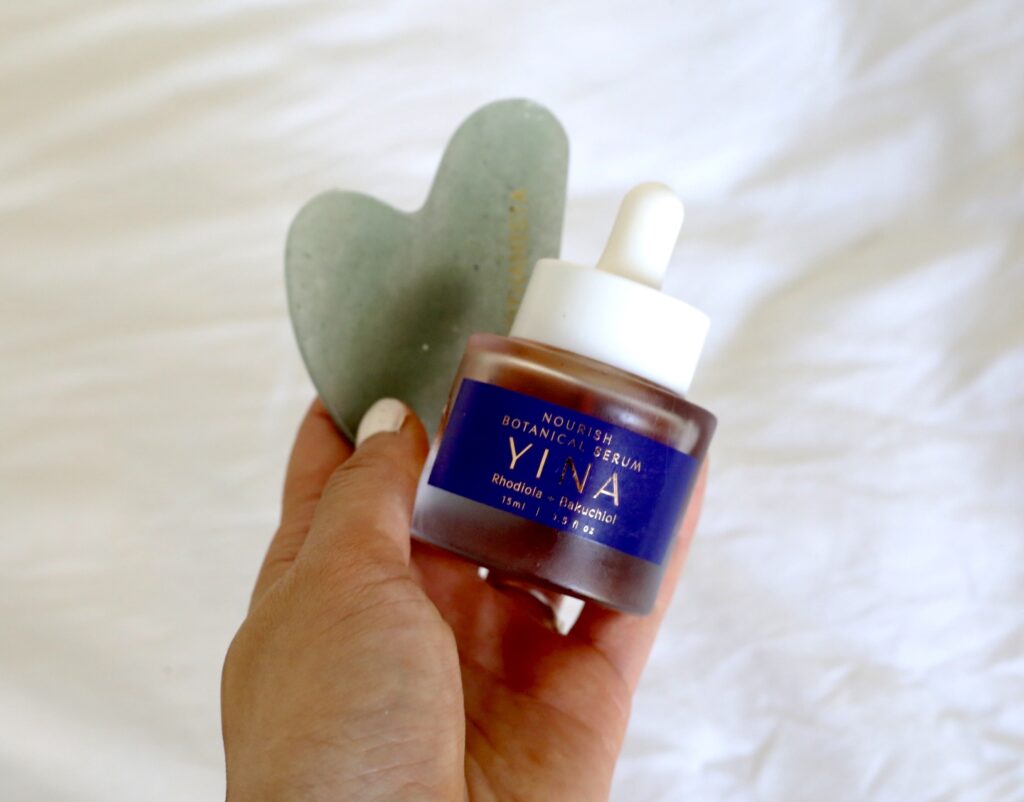
What is Gua Sha?
Gua sha is a traditional Chinese medicine technique that involves scraping the skin with a flat tool or gua sha stone to promote blood flow, circulation and lymphatic drainage.
The result: firmer, smoother skin and less acne, blemishes, fine lines and puffiness. After testing dozens of face oils while practicing gua sha, I’ve narrowed down this curated list to my top picks and recommendations that provide the best gua sha results – and have a deep and authentic connection to the rich cultural tradition of gua sha.
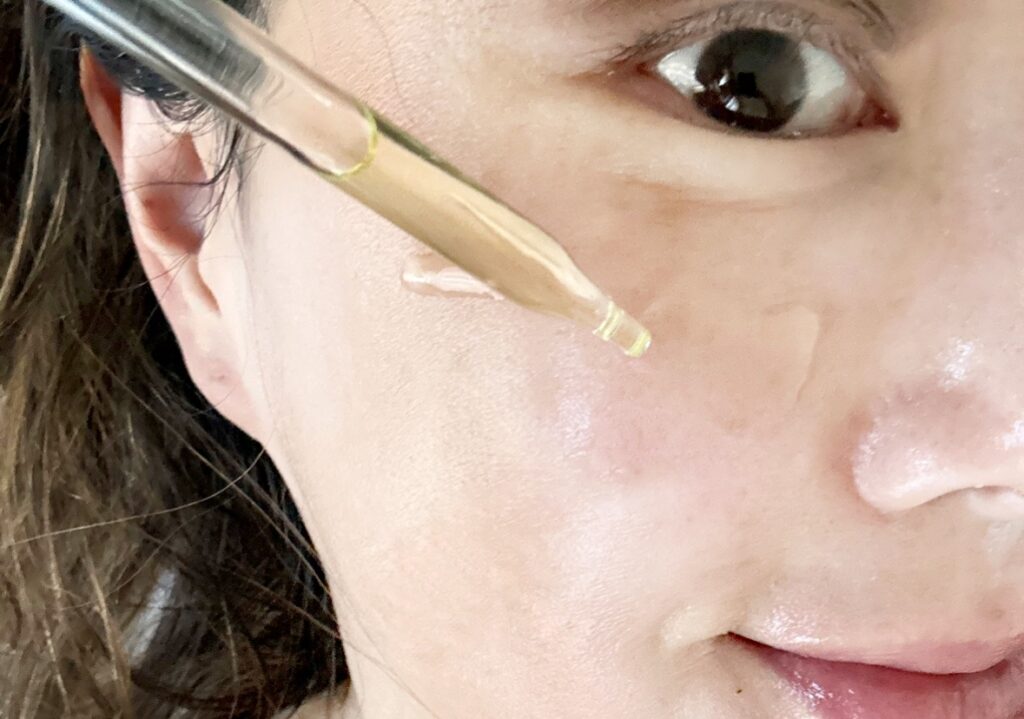
How to Choose the Best Face Oil for Gua Sha
When choosing a face oil for gua sha, Dr. Ervina Wu shares with us “It depends on if you are going to wash it off or keep it on. You can use any oils that are compatible with your skin and won’t break you out since you will be using a good amount. Some oils to consider are rosehip seed, camellia seed, perilla seed, or safflower. “
There are a number of factors to consider when choosing the best natural face oil for gua sha. First, you want a face oil that won’t dry out quickly and has a texture that allows your tool to glide without friction. When there isn’t enough slip, you end up tugging and stretching the skin, which leads to more sagging!
Second, be sure to use a face oil according to your skin type. For instance, if your skin is sensitive or ace prone you should avoid heavy oils like coconut oil and look for a non-comedogenic oil that’s sensitive skin friendly. Dr. Wu shared with us her advice on what face oils are best for acne prone skin. “Choose a lightweight, skin-mimicking oil like camellia seed oil. Our Clarify Botanical Serum is a great choice with a non-comedogenic oil blend of perilla, camellia, and safflower. It also has soothing and clearing botanicals like lotus and ginseng. If you have active acne, definitely proceed with caution. There are gua sha techniques to help “disperse” the heat and calm the inflammation. However, it’s best to let your skin heal or see a licensed cosmetic acupuncturist who can help,” said Dr. Wu.
Lastly, the oil should be nourishing and strengthening and free from any harmful ingredients. Scraping the skin during gua sha means you’re pushing ingredients deep into the skin’s layers, so you want to be sure they’re as skin beneficial as possible.
Oils I Don’t Recommend
– Coconut Oil: I don’t recommend using coconut oil for gua sha because it’s too heavy and pore clogging for many people
– Olive oil: Olive oil is another oil that feels too greasy and heavy on the skin.
– Castor oil: Castor oil can also be too heavy for certain individuals and cause breakouts.
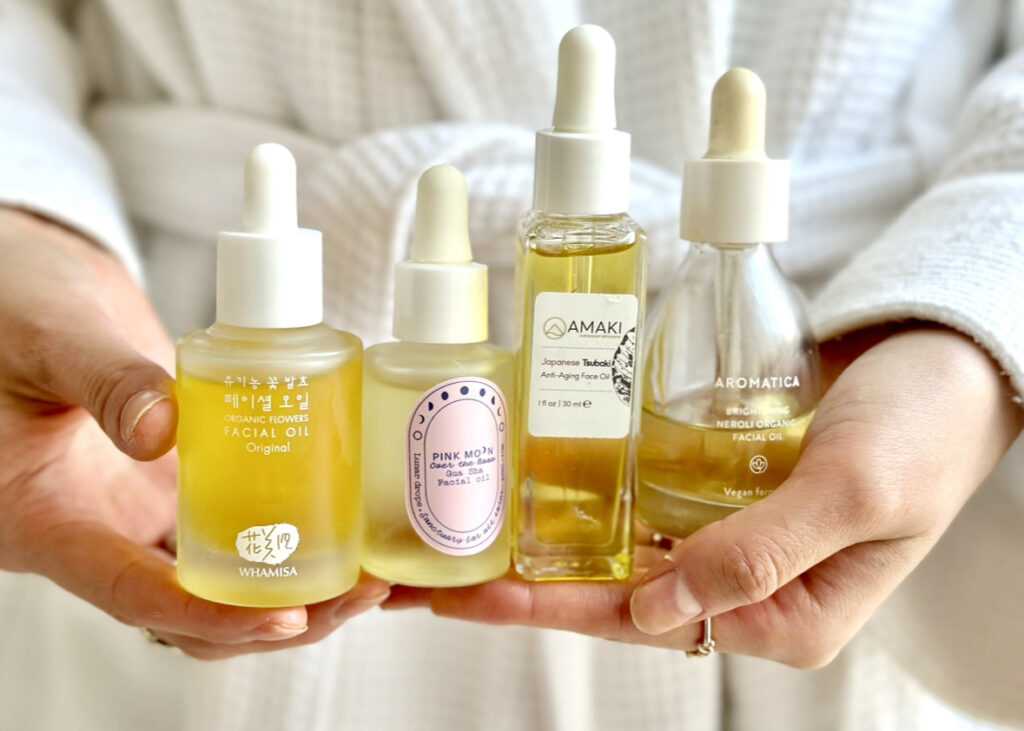
Best Face Oils for Gua Sha Compared
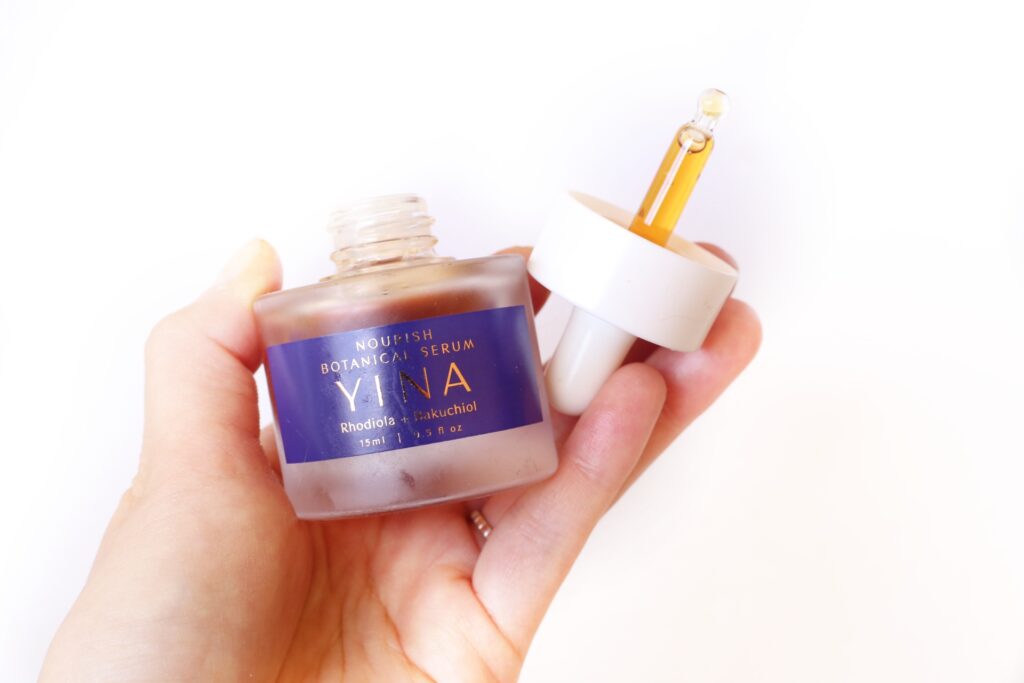
I tried YINA Nourish Botanical Serum
For the most authentic gua sha treatment, my top pick is YINA’s botanical serum. This luxe organic face oil is deeply rooted in traditional Chinese medicine and contains a proprietary Chinese medicine plant complex of Rhodiola, Angelica Root, Gromwell Root, Bakuchiol, and Asian Knotweed in a base of organic Camellia Seed Oil.
It allows my gua sha stone to glide effortlessly across my skin and feeds it with adaptogens and powerful antioxidants, leaving my skin feeling soft, supple and nourished.
What I love: It has a deep and authentic connection to gua sha’s traditional Chinese medicine roots and is packed with Chinese medicinal plants and organic, wildcrafted ingredients.
What I don’t love: Price is not budget-friendly
Price:$85
Use OBL for 20% off
Shop Here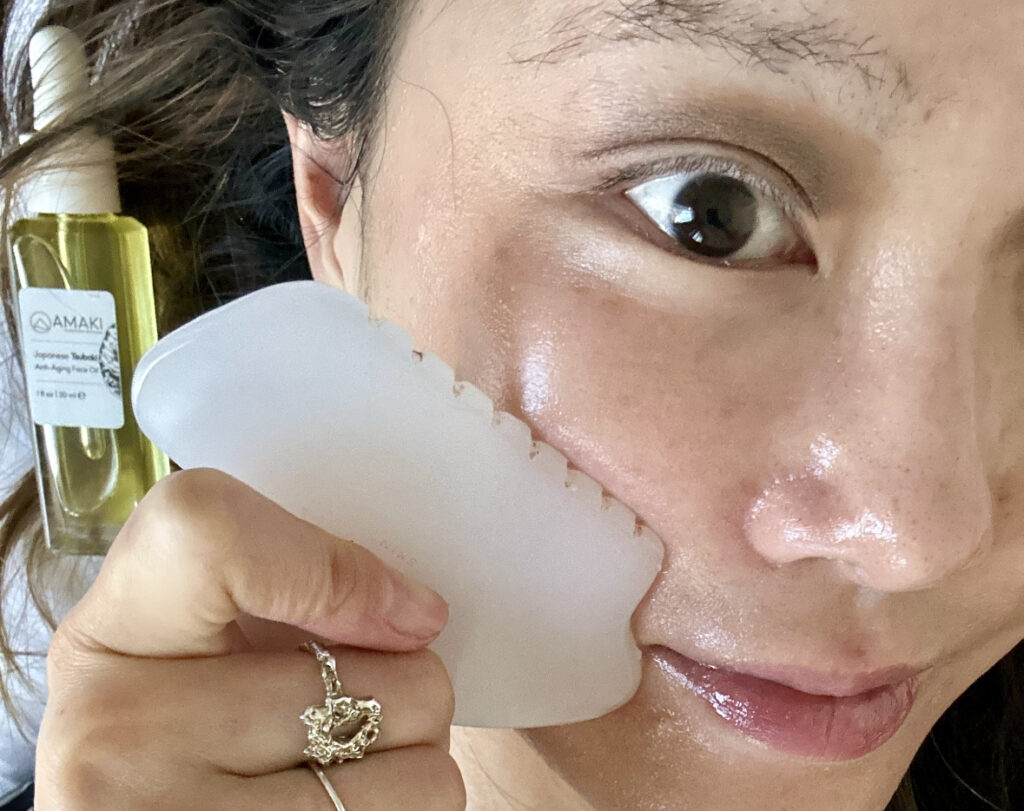
I tried Amaki Skincare Japanese Tsubaki Anti Aging Face Oil
One of my top picks and recommendations for a face oil for gua sha is the Amaki Skincare Japanese Tsubaki Face Oil. This is an impressive blend of a variety of oils that provide deep nourishment to skin and long lasting slip for your gua sha tool. It’s got lightweight and non-pore clogging Argan oil, soothing Chamomile oil, brightening sunflower oil, skin softening jojoba oil and moisturizing rice bran oil – all for an affordable price. This face oil feels silky and non-greasy and really goes deep into the skin. The bottle may look small but it actually contains the standard 1 oz of product.
What I love: It has plenty of additional skincare benefits from combining multiple nourishing oils and it’s super affordable!
What I don’t love: The floral scent is very fragrant and might be too strong for some people.
Price: $35
I tried Cocokind Watermelon Hemp Oil (great for acne prone skin!)
If you’re looking for the best face oil for acne prone skin during gua sha, look no further than Cocokind’s Watermelon Hemp Oil. This is a lightweight face oil with certified organic hemp seed oil, watermelon seed oil and rosemary oil that absorbs immediately and provides plenty of slip throughout your Gua Sha treatment and long after.
It doesn’t feel like it’s sitting on the skin and has a bit of a drier consistency compared to other face oils. The hemp seed oil is amazing for calming breakouts and soothing inflammation without clogging pores.
What I love: It’s non-greasy, light yet rich enough for gua sha and SO affordable.
What I don’t love: Packaging can get a little messy over time.
Price: $18
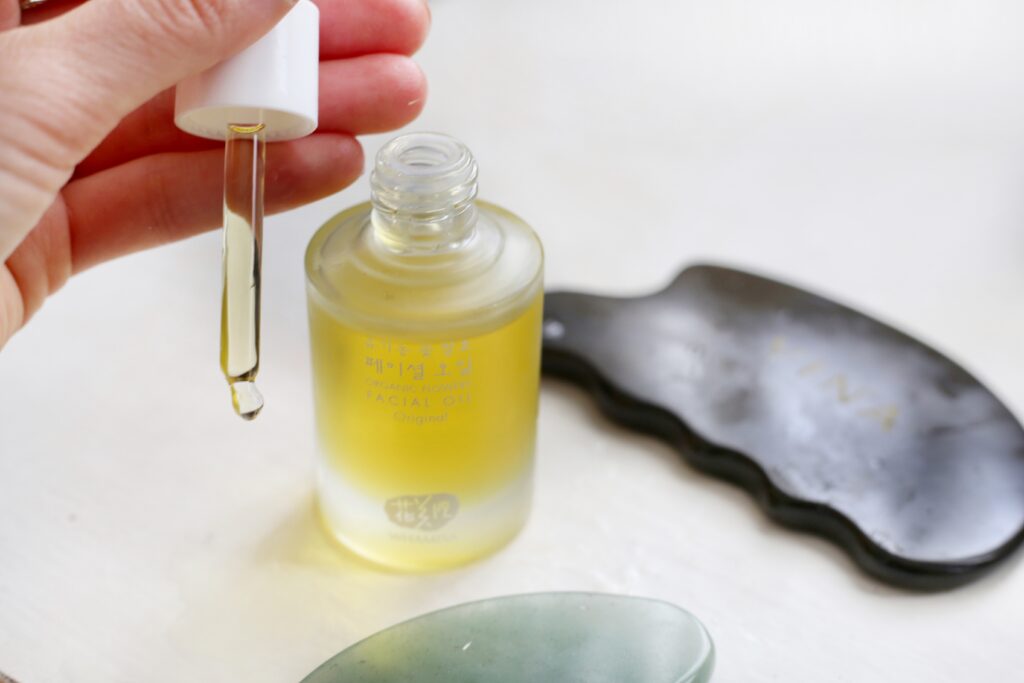
I tried Whamisa Organic Flowers Face Oil
For those who want the best Korean face oil for gua sha, my top pick and recommendation is the Whamisa Organic Flowers Face Oil. It’s certified organic and vegan with a BDIH Cosmos Organic certification and has a unique light yet rich enough consistency that’s perfect for gua sha.
They use organic oils derived from camellia and green tea seeds, calendula flower oil to soothe inflamed skin, evening primrose oil, jojoba seed oil, sunflower seed oil along with fermented flowers and root extracts common in traditional Chinese medicine.
This face oil feels so luxurious and amazing on the skin and provides great slip throughout all my gua sha treatments.
What I love: It has over 95% organic ingredients, an amazing floral scent and provides amazing slip.
What I don’t love: It’s only .8 oz instead of a full 1 oz.
Price: $39
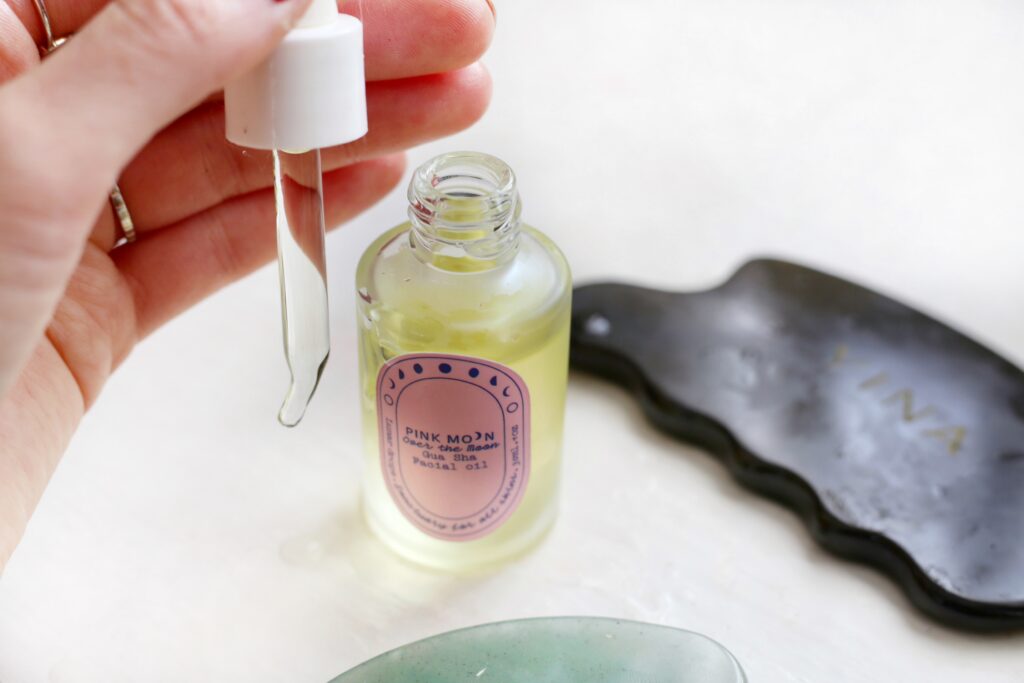
I tried Pink Moon Over the Moon Gua Sha Facial Oil
Specifically formulated for gua sha, Pink Moon’s Over The Moon Gua Sha Facial Oil provides amazing slip and glide while deeply nourishing skin with organic sunflower oil and Moringa seed oil. It’s non-comedogenic and great for acne-prone skin without leaving any greasy sensation.
The calming floral scent of neroli, rose and sandalwood adds a grounding element to a gua sha treatment.
What I love: It’s one of the few face oils that are specifically formulated for gua sha!
What I don’t love: It doesn’t have as many ingredients to benefit skin as other face oils.
Price: $58
I tried 100% Pure Super Fruits Facial Oil
Out of the four 100% Pure face oils I’ve used with my gua sha routine, my favorite one is their Super Fruits Facial Oil. It’s light and non-greasy and packed with antioxidants from amazing nutrient-rich superfoods like açaí, goji berry, pomegranate, mangosteen, prickly pear seed, cranberry and blueberry.
It helps my gua sha tool glide over smoothly and injects a healthy dose of antioxidants into my skin, leaving it so much more nourished and brighter.
What I love: It has tons of superfood nutrients in a lightweight sunflower oil base.
What I don’t love: The pump is a little annoying to use compared to a dropper.
Price: $48
Use ORGANICBEAUTYLOVER for 20% off
Shop HereAromatica Brightening Neroli Facial Oil
Another Korean face oil for gua sha I recommend is the all natural and organic Aromatic Neroli Brightening Facial Oil. It has a couple of great natural oils for Gua Sha like sunflower seed oil and jojoba seed oil and is a little bit thicker (but not greasy!) than other face oils thanks to shea butter.
This is a great face oil for dry, dehydrated, ageing, dull and even sensitive skin to use with gua sha. The neroli oil helps improve skin elasticity, repair broken capillaries and even skin tone and firm sagging skin.
What I love: It works great for longer gua sha treatments, has a fragrant neroli scent
What I don’t love: The dropper is not the best quality and some people may not enjoy the neroli scent.
Price: $32
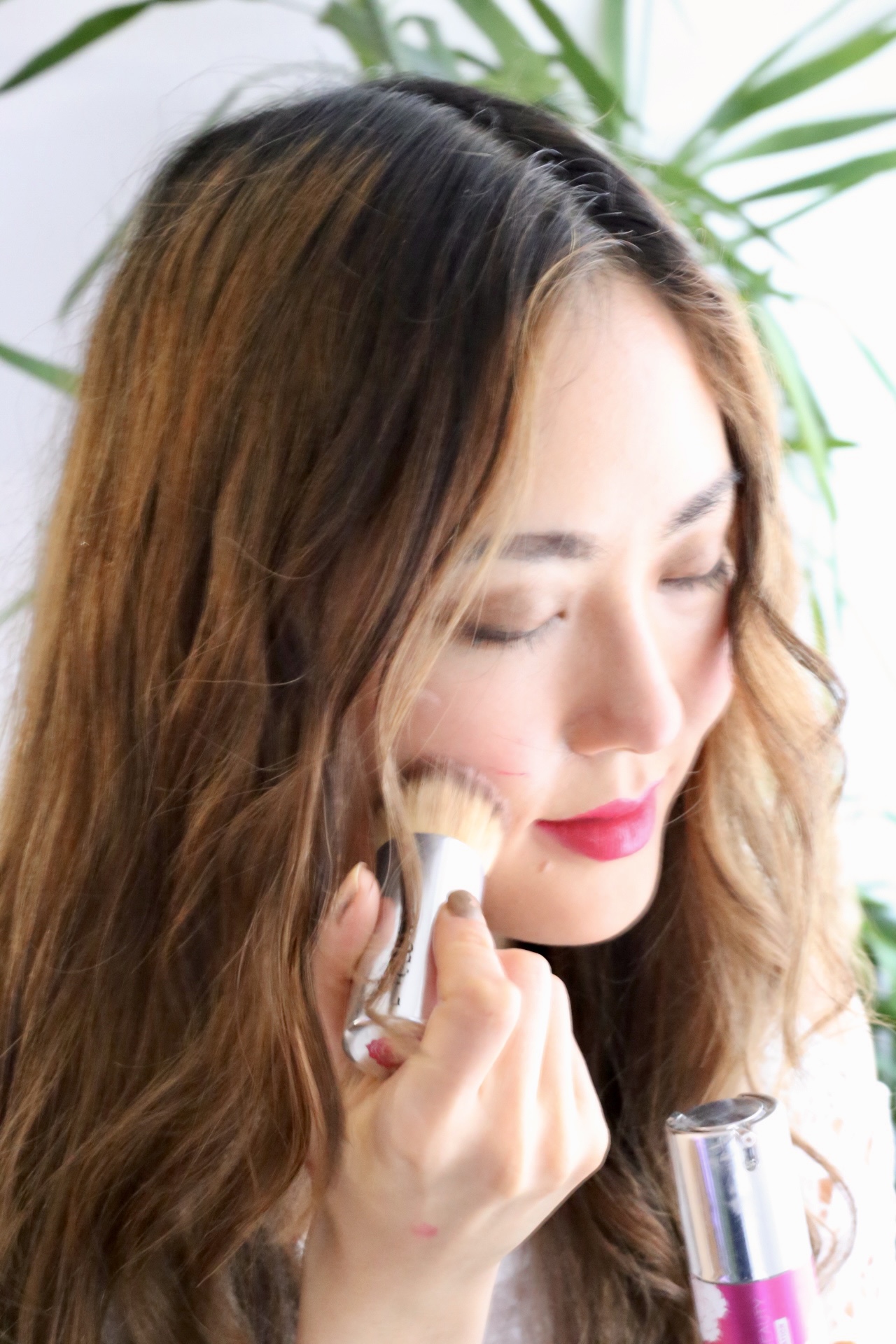
Andrea is a clean beauty expert from Los Angeles, California with 10 years of experience in natural skincare and organic living. She writes for Organic Beauty Lover using her expertise to guide readers in choosing the best clean products. Andrea graduated from the University of Southern California in 2012 and has worked at multiple skincare companies, big and small. Connect with her @organicbeautylover.

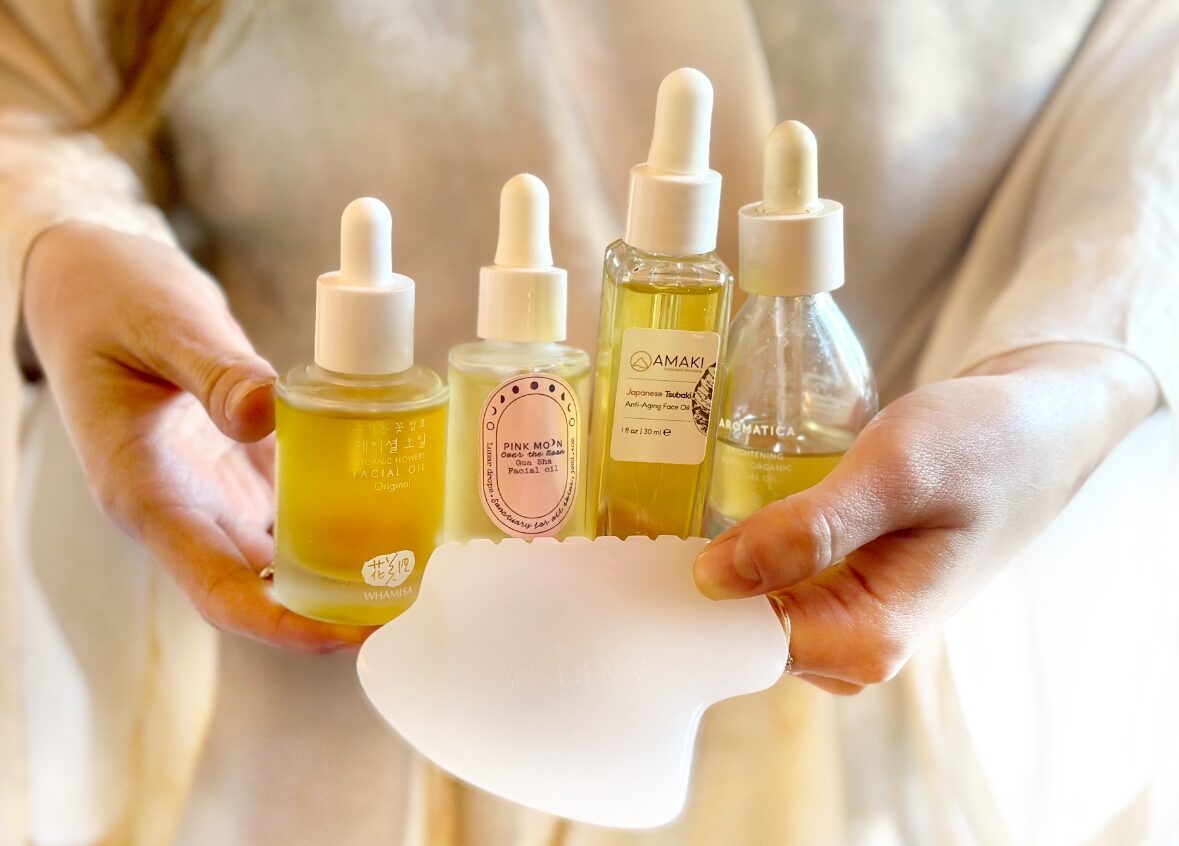
Leave a Reply